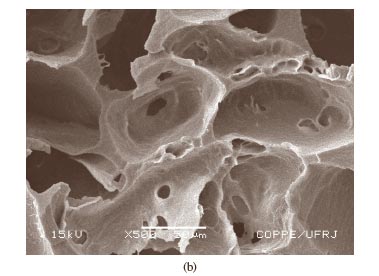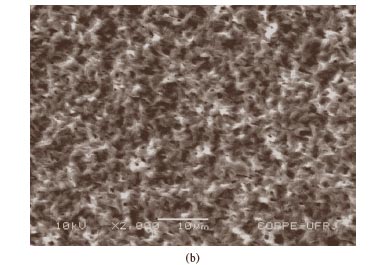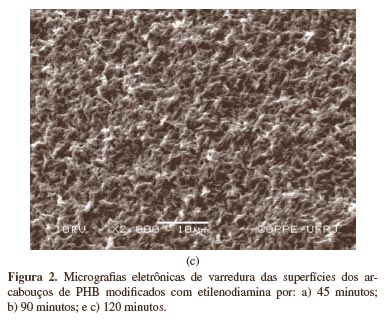Human plasma fibronectin (FN) was adsorbed onto the surface of polyhydroxybutyrate (PHB) scaffolds with aim of improving adhesion of human osteoblasts (HOB). PHB scaffolds were modified via reaction with ethylenediamine in order to create sites for FN immobilization. Morphological and chemical composition changes were observed for treated scaffolds which led to an increase in the concentration of FN adsorbed onto scaffold surfaces. AFM images showed that FN molecules assumed distinct conformation according to the surface to which they were adsorbed. It is believed that the FN molecules added to non-treated scaffolds assumed an unfolded conformational owing to the exposure of their RGD domains, thus promoting an increased HOB adhesion. On the other hand, FN molecules which were added to the surface of previously treated scaffolds are believed to have assumed a folded conformation, hiding some RGD domains and inhibiting HOB adhesion.
Polyhydroxybutyrate; bone engineering; biomaterials; surface modification









